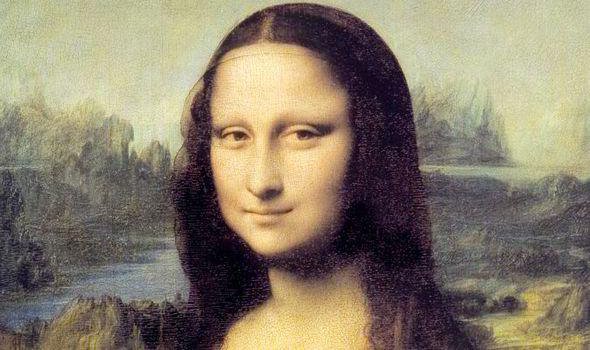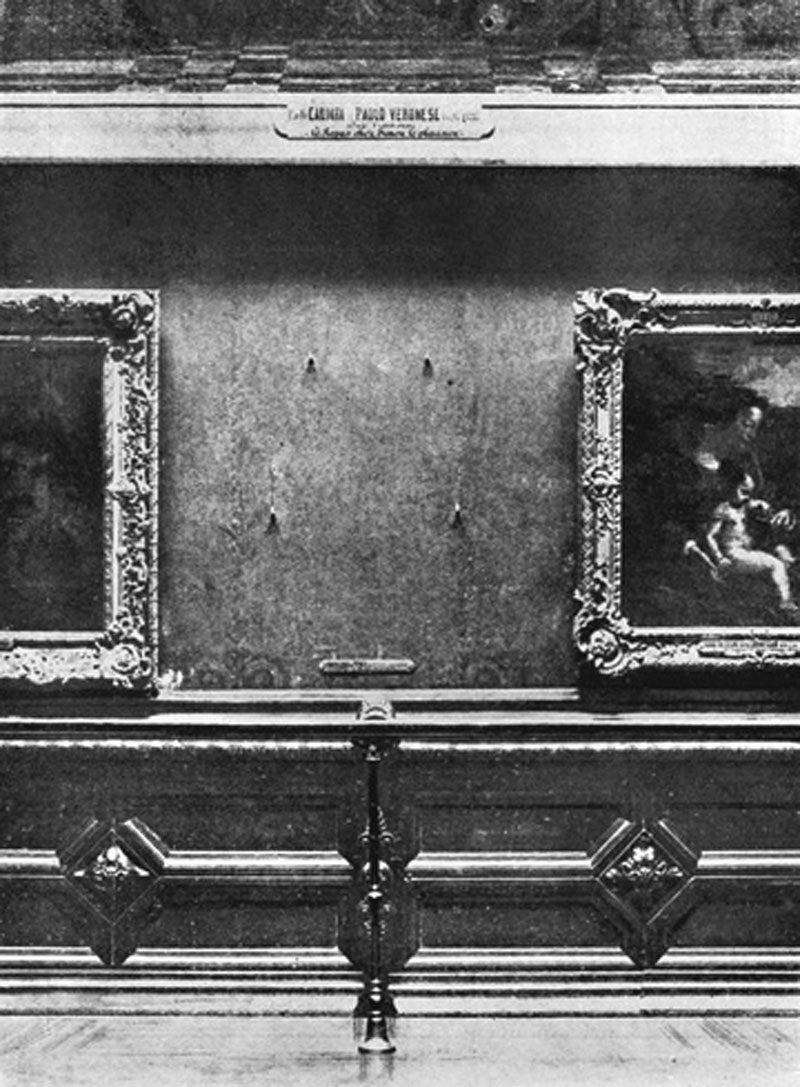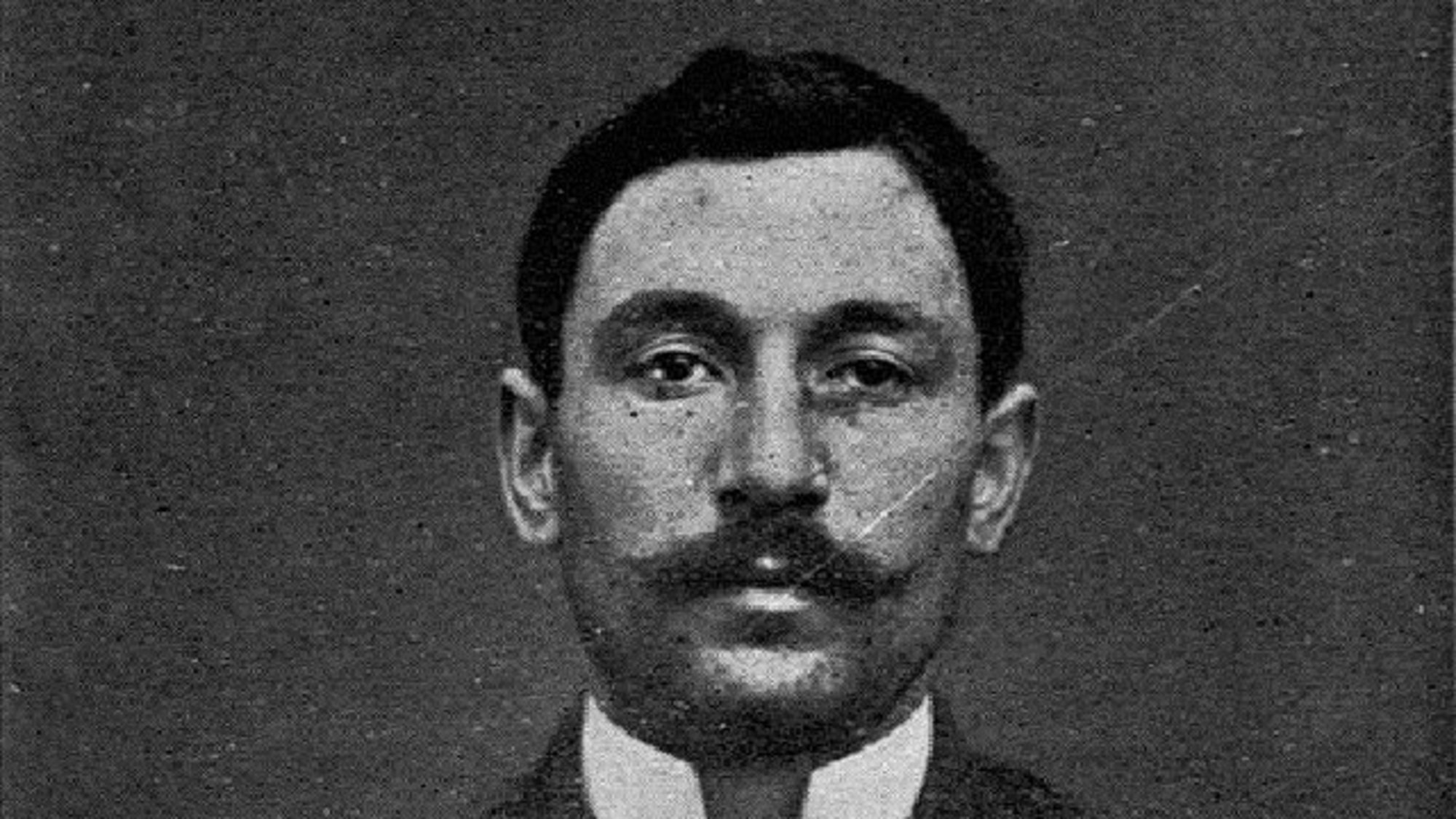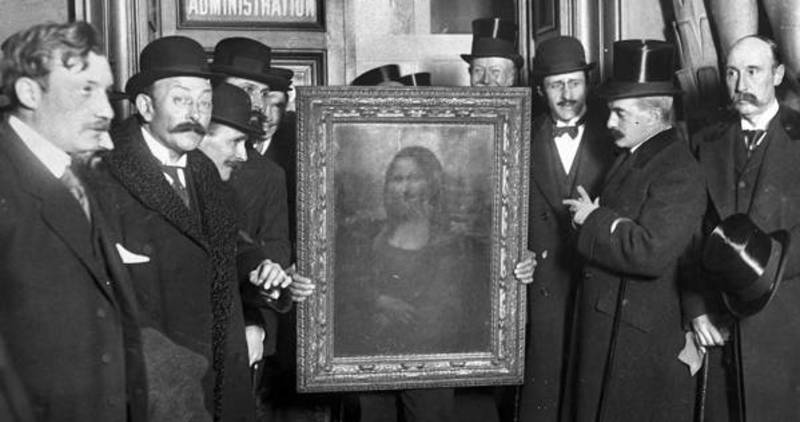
Even if you’re not an art lover, you’ve seen reproductions of the Mona Lisa, Leonardo da Vinci’s famous 16th-century portrait that has been hailed as a masterpiece. Today, we see the Mona Lisa’s enigmatic smile on T-shirts, mugs, phone cases and mousepads. So popular and recognizable is she that it is hard for us to believe that the painting remained in relative obscurity in the Louvre museum in Paris until it was stolen in 1911. The theft and subsequent search for the painting brought worldwide attention to the Mona Lisa and made her the most recognized painting in the world.
the theft
In August 1911, a handyman working for the Louvre Museum named Vincenzo Peruggia, an Italian national, hid overnight in a museum closet. In the early hours of the morning, he snuck out and retrieved the Mona Lisa from behind the protective glass case. During that time, there were no alarms in the museum and only a few night guards. Peruggia tucked the painting under his shirt and headed for the door. He had a moment of panic when the door didn’t open from the inside like he’d assumed it would. But a plumber showed up to do a job and was kind enough to unlock the door for Peruggia.

the discovery of the crime
The Mona Lisa was not reported missing for about 24 hours. It was not uncommon for the artwork on display to be routinely removed for cleaning and photographed, so the blank spot on the wall was not of immediate concern. In fact, it was a patron of the museum who first noticed and questioned the whereabouts of the painting. This man was a budding artist who had set up his easel to paint nearby, but he wasn’t inspired without the Mona Lisa watching him, so he asked the guards when the painting would be returned. Guards checked with museum photographers and cleaners and found that no one had the painting. He was gone.

The investigation
Who could have stolen the Mona Lisa? Paris police and the general public had theories about the theft. According to one theory, American millionaires were buying priceless masterpieces on the black market and therefore it was thought that one of them might have ordered the theft of the Mona Lisa. JP Morgan was asked about this, as was Pablo Picasso. Or the Germans could be behind the theft. During this time, tensions between France and Germany were coming to a head and many French citizens believed that the German Kaiser was responsible for the theft. Naturally, the police interviewed the people who worked at the Louvre. Peruggia was, in fact, interviewed twice by the authorities. Both times, the police concluded that he could not have pulled off such a sophisticated robbery.

The recovery
In December 1913, about two and a half years after the Mona Lisa was stolen, Vincenzo Peruggia finally worked up the courage to send a letter to an art dealer in Florence, Italy. A meeting was arranged between Peruggia, the art dealer, and the director of an art gallery in Florence. Then the art dealer saw the seal on the back of the painting, he knew he was dealing with the real Mona Lisa. He and the director of the art gallery asked Peruggia to leave the painting with them, and they transferred payment to him. But shortly after Peruggia returned home, the police broke in and arrested him. The Mona Lisa was returned to the Louvre and Peruggia was sentenced to seven months in prison.